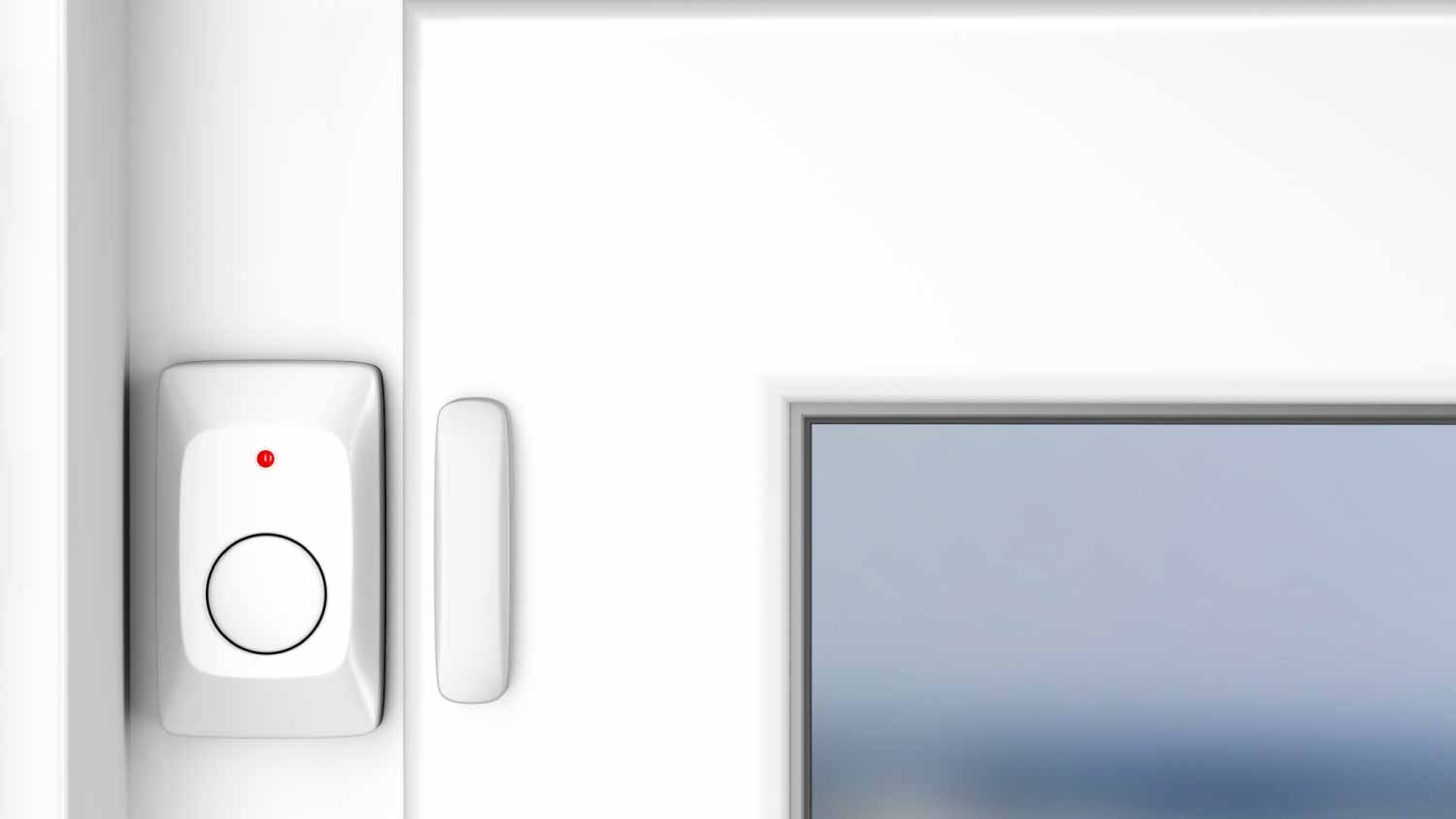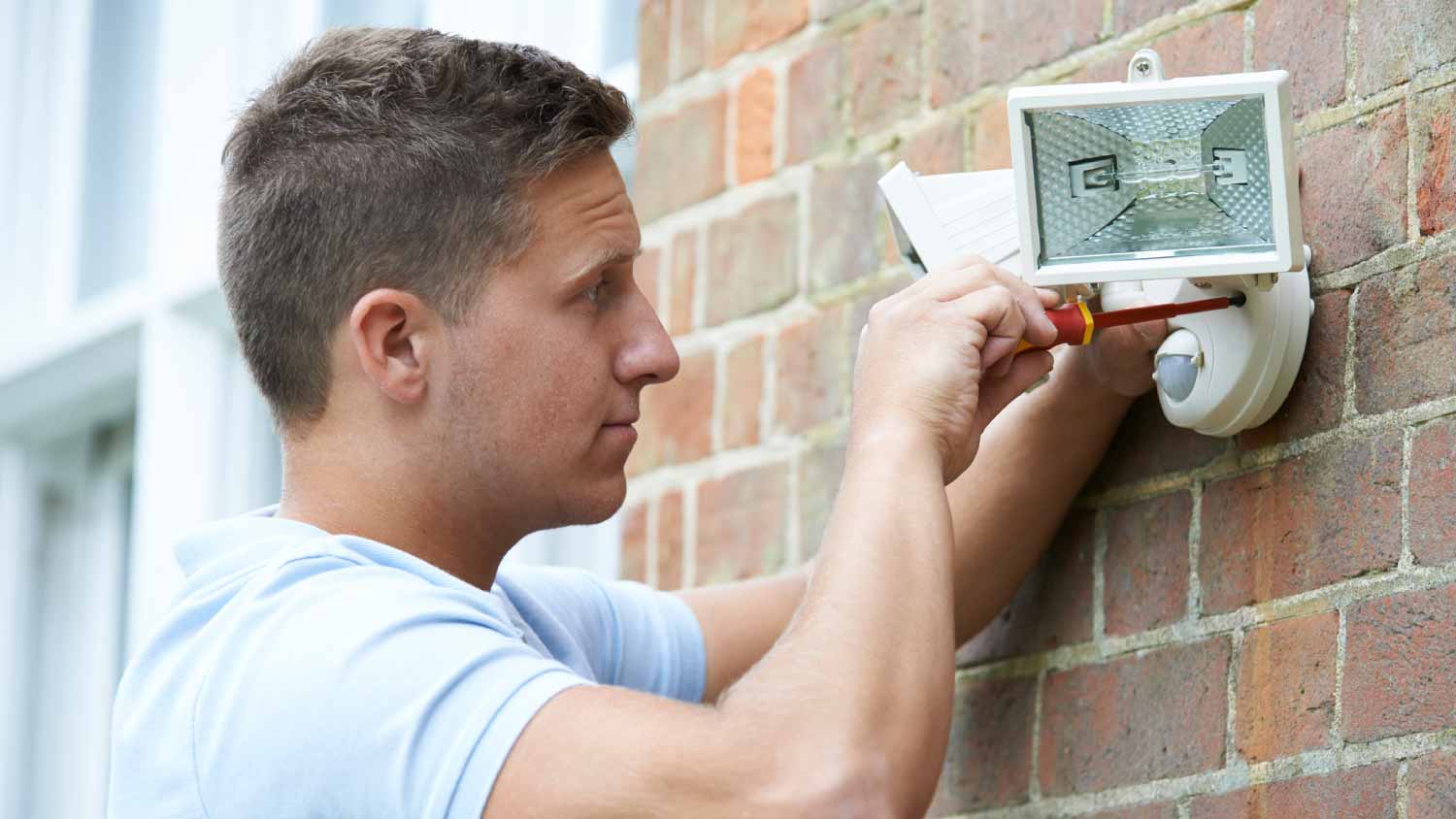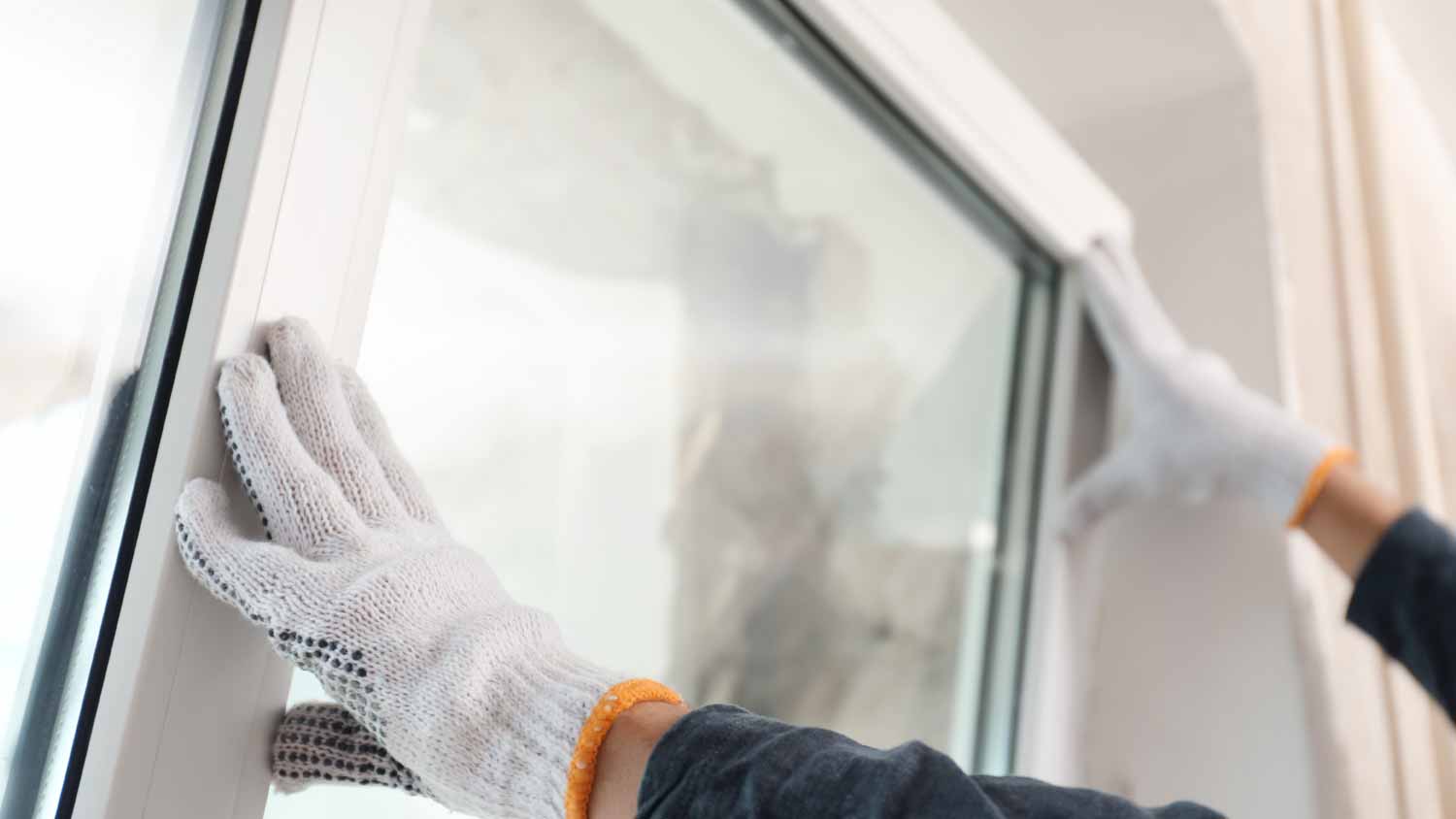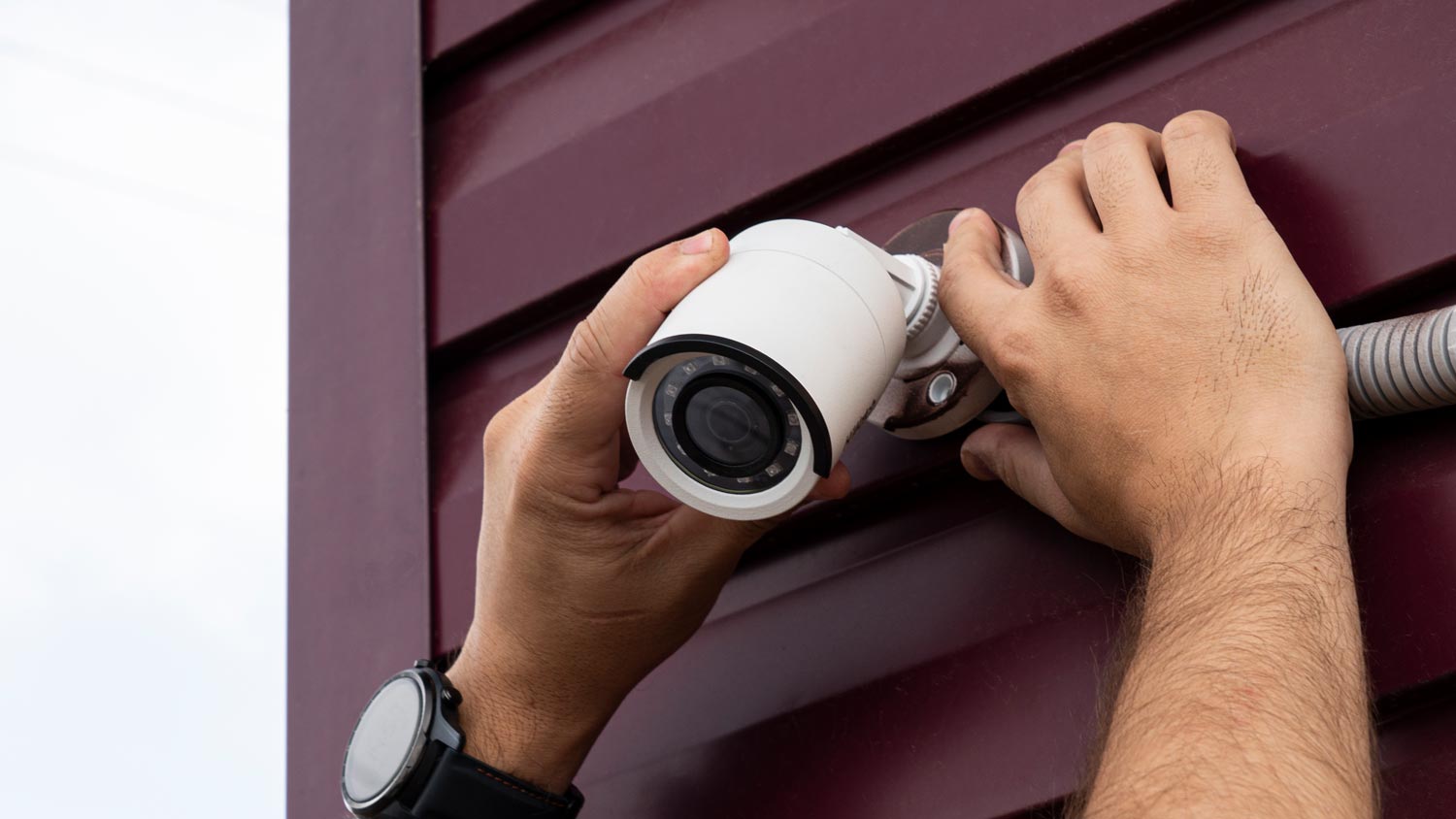How to Secure Windows to Prevent Break-Ins
Stay safe without losing your view


You may think securing your windows means sacrificing the view of your beautiful garden or even tanking your curb appeal. But fortifying your windows against break-ins is a home security upgrade you shouldn’t skip.
There are so many ways to make sure your windows are safely locked up against would-be intruders—many of which won’t interfere with your day-to-day. Whether it’s an alarm, a lock, or a camera, learn how to secure windows so you can rest easy all night long and while you’re away.
Why Is It Common for Windows to Be Broken Into?
If you only protect your doors from break-ins, you’re leaving your home vulnerable. It’s not uncommon for burglars to attempt to break into your home through your window for a few reasons:
Lack of security: Windows are more likely to be left unlocked and vulnerable than a door.
Easy access: Lower-level windows are easier to access by foot and may have fewer lights surrounding them, making it less likely for neighbors to see the activity.
Easily broken into: Windows are reasonably easy to break into with a few basic tools.
Not as fortified: Most homeowners don’t take extra precautions to ward windows against burglary.
To make sure your home is completely protected, secure your windows in addition to other entry points.
1. Add Window Alarms

There are three types of window alarm sensors you can choose from: contact sensors, glass break sensors, and motion sensors. All of them would do a good job of keeping your windows secure without drastically changing their appearance.
Contact sensors: Most modern home security systems come with a contact sensor, which consists of two pieces: one on a window frame and the other on its movable sash. When armed, the sensor will trigger an alarm whenever the pieces lose contact with each other—as in, whenever the window is opened.
Glass break sensors: These are sensors that monitor any impacts made to the glass of a window. When a window’s glass is damaged, shattered, or moved in any way, the glass break sensor picks it up and triggers an alarm (usually through sound).
Motion sensors: Motion sensors are a great option for a sensor you want to use on more than just windows. Motion sensors come with most wireless home security systems, and they can be positioned in a way that picks up movement anywhere near a window. That way, anyone approaching or attempting to enter will prompt the alarm.
2. Upgrade Window Locks
While it is important to lock your windows, it’s still easy for an intruder to get in through their pre-installed, run-of-the-mill locks. If you want to secure your windows, go with an upgraded lock so there are fewer ways to force the window open. This will depend on the type of window and how it opens.
Consider these lock options:
Window security pins: This lock is best for older, double-hung windows because it keeps them from lifting open beyond a few inches.
Keyed sash lock: This works the way a traditional sash lock does, but with more security via a lock that you can turn with a key from inside.
Track locks: These compress the track of sliding doors and windows so they can’t easily be opened with human strength.
Bar locks: This lock is basically a bar that you place within a window to keep it from opening.
Ventilation lock: Need to keep the window open for airflow? You can do that with a ventilation lock while still ensuring they can’t be opened from outside.
3. Install Flood Lights

A well-lit area will discourage intruders from even coming near your home. Flood lights are an easy way to make it look like there is lots of light (and activity) in your home even when there isn’t. Plus, they can be controlled by a motion sensor so that they turn on when someone approaches, which gives you a heads-up that a person is nearby.
4. Set Up Security Cameras
Security cameras are a surefire way to keep tabs on your home, which is why they’re included in most home security systems. Putting security cameras near your windows is a no-brainer because you can see every angle of your property and keep an eye out whether you’re at home or away. You can also set the cameras to be motion-activated along with your lights so that if someone approaches your windows, there will be both light and a running camera capturing the situation.
5. Change Window Glass

The types of window glass options out there can get pretty sophisticated. If you’re looking to secure your windows, going for shatter-resistant glass will help. Check out polycarbonate, plastic, or acrylic, especially if you’re less concerned about the window’s appearance. These materials resist impact, and they’re easy to install because they can be cut to fit any window size. You can also apply security film, which holds the window together without changing its material or visibility.
6. Increase Window Treatments
The less someone can see into a home, the less likely they will think of it as a target. Simply closing the blinds and shutting the curtains at night can make a huge difference. If you want to keep the light coming through your windows, you can always apply a sheet of contact paper that blurs the appearance of the glass, so no one can actually see what’s inside.
DIY vs. Hiring a Pro
Securing your windows will likely include hiring a security system professional to install cameras and sensors around your property. If you choose a modern wireless system and feel confident in your DIY skill set, you can probably take care of the installation yourself. If the system is hardwired, it will require professional installation. You should also look into hiring a local window pro to change your windows if you want to upgrade your locks or switch out the glass.
When it comes to adding protective film, changing window treatments, or adding new blinds or curtains for better security, these are all possible to do yourself within a day or so.
How Much Does It Cost to Secure Windows?
The cost of securing your windows depends on the method you go with. Something like adding window treatments costs $155 to $1,660. Something more labor-intensive would include adding new window locks or installing security system cameras. The cost of installing a security system is an average of $700, but it depends if you go with a modern wireless system or a professionally installed hardwired system.
Frequently Asked Questions
There are a number of ways to secure windows. You can add motion detectors or window sensors to detect movement and impact or change the window locks to make them stronger. Some of the ways you can secure windows are much like how you secure a home: closing the curtains at night and setting up security cameras outside so you can monitor your property even in your absence.
Shatter-resistant glass will ensure that even with a high impact, the glass of your window panes is less likely to break. If you’re looking for a more low-cost way to prevent vandalism, the most traditional answer would be to board up windows with a strong plywood sheet. Adding security cameras is also a surefire way to ward off potential vandalism.





- 14 Things to Consider Before Buying Windows
- When to Replace Windows: 10 Signs That It’s Time to Start Shopping
- 6 DIY Home Security Projects You Can Tackle on the Weekend
- How Long Do Windows Last and When Should You Replace Your Windows?
- 12 Effective Tips to Secure Your Apartment
- 10 Tips on How to Make Windows More Energy Efficient
- How Long Does It Take to Replace a Window?
- 10 Stylish Types of Kitchen Windows to Brighten Up Your Cooking Space
- 15 Window Design Ideas to Transform Your Home
- 15 Types of Windows and How to Choose the Right Ones















